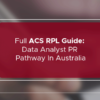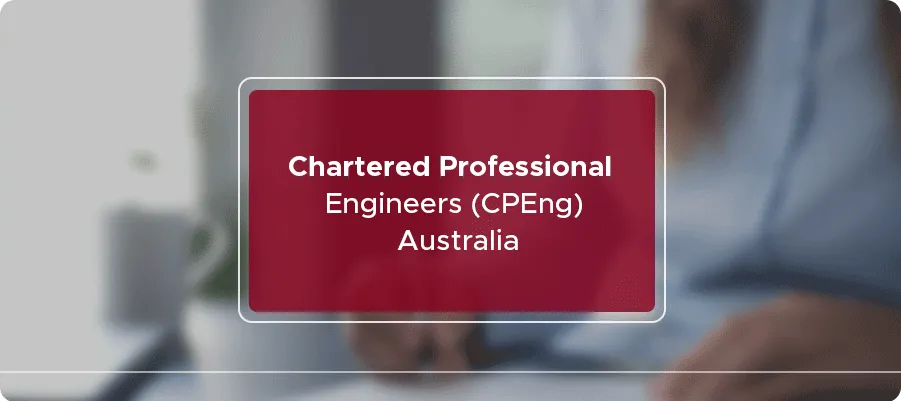
Chartered Professional Engineers (CPEng) Australia
Are you aiming for a successful engineering career in Australia? Becoming a Chartered Professional Engineer (CPEng) is an important achievement that can boost your career.
It shows you have the skills, knowledge, and experience to meet industry standards. This recognition opens up many opportunities and helps you stand out in the competitive job market.
To become a chartered engineer, you must meet specific requirements, including demonstrating your engineering expertise and commitment to professional development. The process involves submitting detailed evidence of your work and skills, followed by an assessment.
This guide will help you understand the steps to becoming a chartered professional engineer in Australia, its advantages, and how to succeed in the process. If you need support with preparing your application, expert services are available to guide you through every step and increase your chances of success.
What is a Chartered Professional Engineer Australia (CPEng)?
A chartered professional engineer is a person who has demonstrated to have advanced engineering knowledge, abilities, and ethics. The designation, which is given by Engineers Australia, confirms that the engineer has fulfilled all of the requirements needed for them to work successfully in their field.
In terms of international agreements such as the Washington Accord, the CPEng designation is widely accepted. An essential qualification for people who are looking for opportunities globally, this designation allows chartered engineers to operate in a variety of nations.
Read More: Learn more about CPEng Australia. 🚀✈️😊
Benefits of Becoming a Chartered Professional Engineer

Having your CPEng Australia certificate has many benefits; therefore, it’s an excellent decision for your engineering career.
1. Professional Recognition
In Australia and around the world, employers, coworkers, and clients generally recognise and appreciate the CPEng designation. It shows your proficiency and dedication to maintaining the highest standards of professionalism.
2. Career Advancement
Becoming a CPEng could help you advance your career. Chartered engineers may be given preference for high-level jobs, leadership positions, and important projects by many employers, who see them as team leaders.
You have a better chance of getting promotions, pay raises, and other professional advantages if you are CPEng.
Having a chartered engineer designation improves your chances of finding employment both domestically and internationally, as some organizations have special requirements for individuals.
3. Global Mobility
The CPEng Australia designation is globally recognized and respected. Through the Washington Accord, which is an international agreement among professional engineers, the CPEng title is recognized in many countries.
This gives you the flexibility to work abroad without needing to requalify, which is a huge advantage if you are considering working in different parts of the world.
4. Improved Skills and Knowledge
The path to becoming a chartered engineer involves both professional and personal development. Finding your strengths and weaknesses is made easier by the procedure, which also encourages you to work on your areas of weakness.
Along with developing your leadership, communication, and decision-making skills—all essential for professional success—you will also obtain a thorough understanding of your engineering field.
5. Enhanced Professional Networks
As a CPEng holder, you will be part of an excellent network of professionals through Engineers Australia. This gives you access to exclusive events, seminars, conferences, and other opportunities that will help you stay up-to-date with industry trends, meet influential peers, and expand your professional connections.
Australia’s requirements for becoming a chartered professional engineer
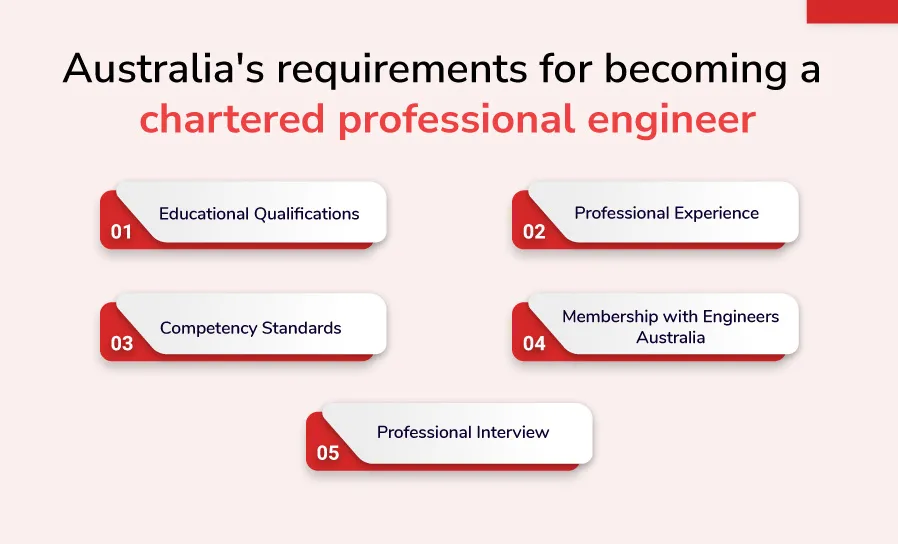
To become a Chartered Professional Engineer in Australia, you must fulfil several requirements that show your professional knowledge, background, and moral character.
The primary requirements for earning the CPEng Australia recognition are listed below:
1. Educational Qualifications
You must have an engineering degree from an Australian university that achieved approval or a recognized foreign degree that is considered equivalent.
Engineering ideas, theories, and practices must be well-founded, and the degree must satisfy the educational requirements established by Engineers Australia.
2. Professional Experience
You must show that you can apply your technical knowledge and skills to real-world projects over your five years or more of engineering experience.
It should demonstrate your growth beyond entry-level positions and your ability to manage difficult engineering tasks and make decisions on your own.
3. Competency Standards
The CPEng accreditation process requires you to prove that you meet 16 competency elements under Engineers Australia’s Stage 2 Competency Standards. These competencies cover a range of areas, including technical proficiency, problem-solving, project management, leadership, and ethical conduct.
You must provide evidence of how you meet each competency through your work experience.
4. Membership with Engineers Australia
You must be a member of Engineers Australia before you can begin the process of applying for CPEng Australia. Becoming a member gives you access to the resources and support needed to work through the application process and receive guidance as you prepare for the chartered assessment.
5. Professional Interview
Engineers Australia conducts professional interviews as the last stage in acquiring CPEng certification. During the interview, assessors will review your portfolio and assess your understanding of engineering practices, your leadership abilities, and your professional ethics.
You will be asked to demonstrate your competence in various areas and show how you meet the necessary competency standards.
Steps to be followed to be a Chartered Professional Engineer in Australia
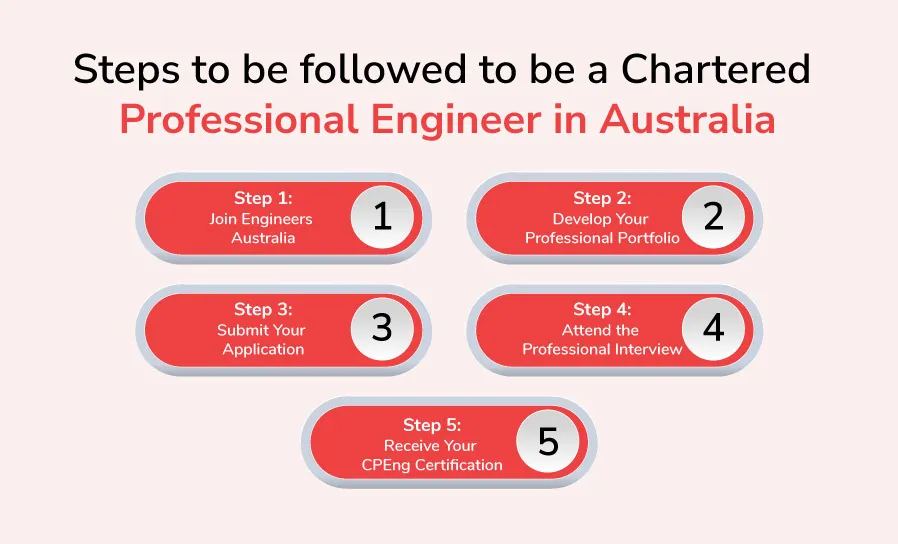
If you are ready to take the next step in your engineering career and pursue the CPEng Australia title, here is a step-by-step guide to the process:
Step 1: Join Engineers Australia
Joining Engineers Australia is the first step towards becoming a chartered engineer. You can access networking opportunities, resources, and assistance by becoming a member. Applying for membership at different levels is possible based on your experience and qualifications.
Step 2: Develop Your Professional Portfolio
Create a portfolio of your engineering projects. Documentation of your professional accomplishments, problem-solving abilities, leadership experiences, and project management should be included in Your portfolio which should show that you meet the requirements and highlight the 16 skills that Engineers Australia has set.
Step 3: Submit Your Application
When your portfolio is prepared, use the Engineers Australia portal to submit it with your CPEng application. You must submit documentation of your professional experience, educational background, and other relevant details with your portfolio.
Step 4: Attend the Professional Interview
You will receive an invitation to a formal interview following the examination of your application. You will be asked to go into further detail about your experiences, skills, and ethical considerations by Engineers Australia examiners during this interview.
This is your opportunity to prove that you fulfil all the requirements.
Step 5: Receive Your CPEng Certification
You will receive the CPEng Australia designation if your application is accepted and you pass the interview. Now you have to earn this professional recognition where you can use the CPEng title after your name and make use of its advantages.
Learn More: Step-by-Step Process to Become a CPEng😊🚀🛰️
Maintaining Your Chartered Professional Engineer Status
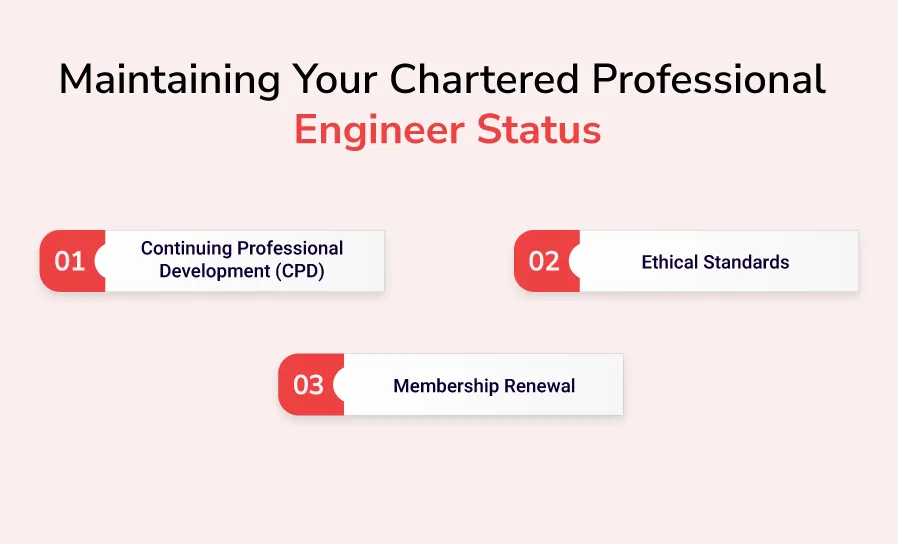
Once you have achieved CPEng Australia status, it is important to maintain your accreditation by continuing to meet certain professional standards. These include:
1. Continuing Professional Development (CPD)
To keep up with developments in the industry, a chartered engineer must participate in continual professional development(CPD). Members of Engineers Australia must finish a specific amount of CPD annually. This can involve taking classes, going to conferences, or taking part in seminars.
2. Ethical Standards
To maintain the CPEng title, engineers must act ethically and follow the standards set by Engineers Australia. They must make decisions that ensure the safety and well-being of the public.
Engineers are expected to always meet high professional standards and ensure their work does not cause harm. By doing so, they keep their qualification and continue to make a positive impact in their profession.
3. Membership Renewal
To retain your CPEng status, you must renew your membership with Engineers Australia annually. This ensures that you remain up-to-date with industry developments and maintain access to valuable professional resources.
Conclusion
We provide expert guidance to help you become a chartered engineer in Australia. With extensive experience in assessing engineering applications, our team of skilled writers is ready to assist you in preparing your reports.
At CDRReportWriters, we specialize in creating high-quality Competency Demonstration Reports (CDRs) for engineers planning to migrate to Australia.
Our experts offer comprehensive support, including writing and reviewing CDRs, developing Career Episodes, preparing detailed Summary Statements, and assisting with CPD (Continuing Professional Development) documentation.
Our goal is to make the process seamless and ensure you meet Engineers Australia’s standards, helping you advance your engineering career in Australia.
FAQs
1. What is Engineers Australia’s role in the CPEng process?
Engineers Australia evaluates the qualifications and expertise of engineers to manage the CPEng process. To help engineers maintain their CPEng title, they establish the requirements, evaluate submissions, and provide assistance.
2. What is the duration required to become a chartered engineer?
It typically takes 6 to 12 months to become a Chartered Engineer, depending on your preparedness and how quickly you can gather the required documentation and evidence.
3. Is a chartered engineer Recognised in Australia?
Yes, the Chartered Engineer (CPEng) title is recognized in Australia, and awarded by Engineers Australia. It shows an engineer meets high standards of skills and experience.
The title is also accepted in Australia, making it easier to work abroad. In Australia, it offers benefits like more job opportunities and professional recognition.
4. Can I apply for CPEng without being a member of Engineers Australia?
No, to apply for the CPEng (Chartered Professional Engineer) designation, you need to be a member of Engineers Australia.
Because Engineers Australia evaluates your qualifications, experience, and proficiency as part of the CPEng application process, membership is essential. You can get the tools and assistance required to fulfil the criteria for CPEng by becoming a member.
Read More: Full Chartered Membership Charges🚀📖💰
5. How much does it cost to become a Chartered Engineer?
The cost of becoming a Chartered Engineer varies depending on your membership level with Engineers Australia and the application fees. Contact Engineers Australia for more detailed pricing information.
6. What is CPEng Engineers Australia?
CPEng (Chartered Professional Engineer) is a title given by Engineers Australia to engineers who meet high standards in skills, education, and ethics.
It is recognized in Australia and globally, helping engineers advance their careers. Engineers Australia oversees the process and ensures ongoing professional development.

